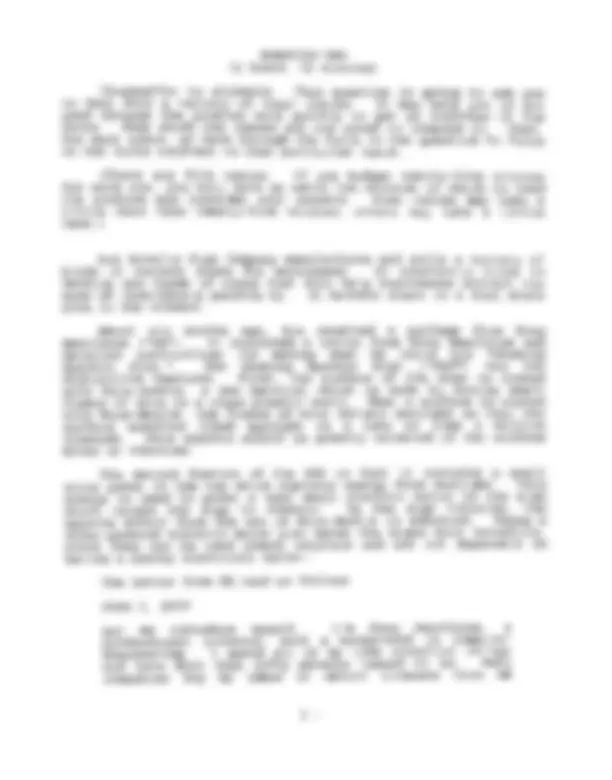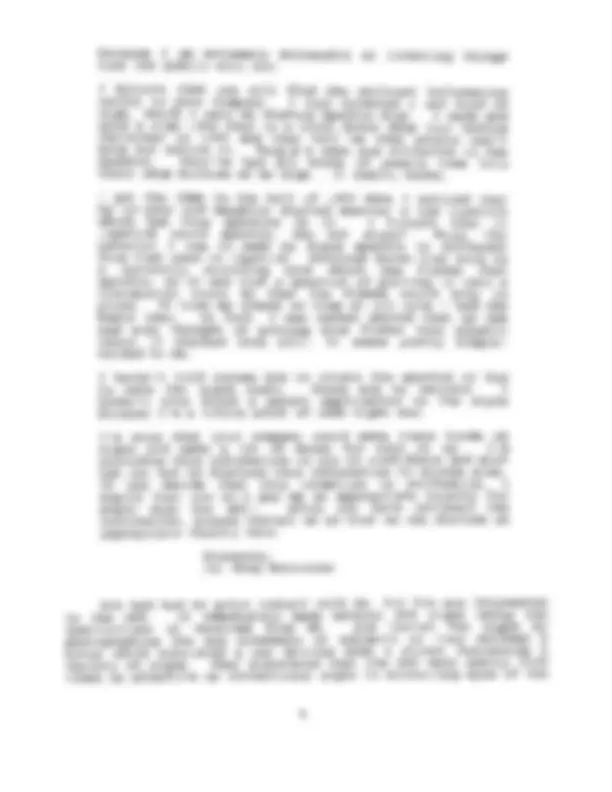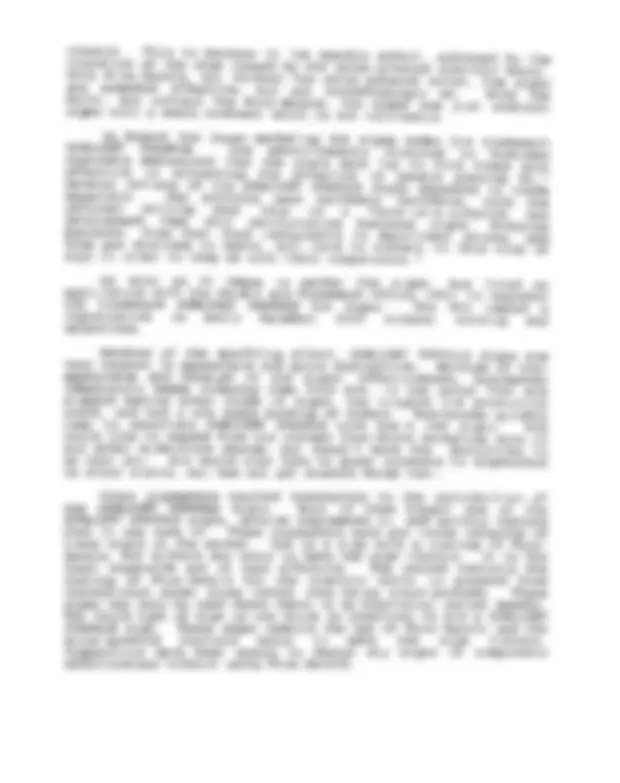





Study with the several resources on Docsity

Earn points by helping other students or get them with a premium plan


Prepare for your exams
Study with the several resources on Docsity

Earn points to download
Earn points by helping other students or get them with a premium plan
Community
Ask the community for help and clear up your study doubts
Discover the best universities in your country according to Docsity users
Free resources
Download our free guides on studying techniques, anxiety management strategies, and thesis advice from Docsity tutors
Two case studies from an intellectual property law examination. The first case study revolves around the copyright dispute between a church and a minister over a religious text. The second case study discusses a patent infringement dispute between a sign manufacturing company and a competitor over a unique sign design. Students studying intellectual property law, copyright law, and business law may find this document useful.
Typology: Exams
1 / 7

This page cannot be seen from the preview
Don't miss anything!




INTELLECTUAL PROPERTY LAW FINAL EXAMINATION -Fall 2000 Professor Robert Kreiss
9;00 a.ffi Dec. 18, 2000 .-12:00 noon This examination consists of ~ questions; you have three hours in which to write your answers. For each question there is a suggested amount of time. Exam-taking hint: Before you begin writing your answer to aquestion, I strongly suggest that you SOend some time (i) reading the question, (ii) analyzing the issues you are asked to address, and (iii) organizinq your answer. Good organization and good analysis almost always go hand-in-hand. You may use as many examination booklets as you need. Please write on one side only of each sheet in your examination booklet. Please write as leqiblv as possible You may use your casebook, have prepared or which were You may not use any other examination is o:gen book supplement, notes you by your study group. This statutory prepared
If you have any ~rocedural questions,^ I^ will^ be^ in^ my office, which is Room 420. GOOD LUCK Exam begins on next page 1
INTELLECTUAL PROPERTY LAW EXAMINATION December 18, 2000
(45 minutes)
In 1981, Christine Casheaux ("CC"), a successful TV preacher, wrote Truth of Ages ("TOA") , a book in which she set forth her views on subjects such as divorce, remarriage, and the nature of Divine Love. The book was published that year with appropriate copyright notice and millions of copies have been sold. In 1985, CC founded the Divine Church of God ("DCG") , a church based on the views contained in the TOA. CC assigned her copyright in TOA to the DCG in 1990. She died in 1992.
In 1995, DCG stopped permitting the distribution of TOA on the grounds that the Church's position on various doctrines 'had changed and TOA no longer reflected the Church's teachings. The Church stated that the book contained many "doctrinal errors" and that it was being withdrawn in order to prevent "transgressions of conscience." The DCG made no attempt to destroy personal copies owned by individuals or copies held by public institutions or public libraries.
Roy Restwood ("RR"), a minister of DCG, resigned from DCG in 1995 as a result of the Church's new positions. He founded a new church, the Church of Casheaux's Truth ("CCT"), dedicated to following the teaching of CC as expressed in her book, TOA. RR believes that the TOA was divinely inspired and that it is an essential religious text for the CCT. CCT rapidly grew to more than 5,000 members. RR had been able to purchase several thousand copies of TOA before the DCG took the book off the market and was able to sell them to his church members.
In 2000, RR's supply of copies of TOA was exhausted and he decided to have TOA reprinted so that his church-members could obtain copies. RR was unable to obtain permission from DCG to reprint the books. The reprints are identical to the originalbook. RR sells the books at cost, making no profit on the sale of the books. Several peop.le who have purchased the reprinted books have joined the CCT and make contributions to that church.
DCG has come to your law firm and seeks to know if it can prevent RR from making and selling copies of TOA. Please analyze DCG's copyright rights and remedies against RR.
-2 -
because I am extremely successful that the public will buy.
I believe that you will find the enclosed information useful to your company. I just invented a new kind of sign, which I call my Shaking Sparkle Sign. I made and sold a sign like this to a local donut shop just before Christmas in 1999 and they tell -me that people can't help but notice it. People's eyes are attracted to the sparkle. They've had all kinds of people come into their shop because of my sign. It really works.
I got the idea in the fall of 1999 when I noticed that my 16-year old daughter started wearing a new lipstick which had tiny sparkles in it. I thought that if lipstick could sparkle, why not signs? Mica, the material I use to make my signs sparkle is different from that used in lipstick. Everyone knows that mica is a naturally occurring rock which has flakes that sparkle, so it was just a question of putting it into a transparent resin so that the flakes would stay inplace. It took me almost no time at all once I had the basic idea. In fact, I was rather amazed that no one had ever thought of putting mica flakes into plastic resin (I checked this out); it seems pretty simple- minded to me.
I haven't told anyone how to create the sparkle or how to make the signs shake. These are my secrets. I haven't even filed a patent application on the signs because I'm a little short of cash right now.
I'm sure that your company could make these kinds of signs and make a lot of money for both of us. I'm providing this information to you in confidence and must ask you not to disclose this information to anyone else. If you decide that this invention is worthwhile, I expect that you will pay me an appropriate royalty for every sign you sell. After you have reviewed the information, please contact me so that we can discuss an appropriate royalty rate.
Sincerely, /5/ Greg Gearloose
Ace had had no prior contact with GG, but Ace was interested in the SSS. It immediately made several SSS signs using the instructions it received from GG. Ace tested the signs by photographing the eye movements of subjects as they watched a movie which simulated a car driving down a street containing a variety of signs. They discovered that the SSS were nearly five times as effective as conventional signs in attracting eyes of the
4
viewers. This is because of the sparkle effect, enhanced by the vibration of the sign caused by the solar-powered electric motor. With Mica-dazzle, but without the solar-powered motor, the signs are somewhat effective, but not overwhelmingly so. With the motor, but without the Mica-dazzle, the signs are just ordinary signs with a small movement which is not noticeable.
In August Ace began marketing SSS' signs under the trademark SUNLIGHT SPARKLE. Ace advertisements directed to business customers emphasized that the signs were "up to five times more effective in attracting the attention of people passing by." Several reviews of the SUNLIGHT SPARKLE signs appeared in trade magazines. The articles were extremely favorable, with one reviewer writing that this is a "once-in-a-lifetime new development that will revolutionize business signs. Everyone business, from fast food restaurants to department stores, and from gas stations to banks, will have to convert to this kind of sign in order to keep up with their competitors."
As soon as it began to market the signs, Ace filed an application with the Patent and Trademark Office (PTO) to register the trademark SUNLIGHT SPARKLE for signs. The PTO issued a registration in early December 2000 without raising anyobjections.
Because of the sparkling effect, SUNLIGHT SPARKLE signs are very unusual in appearance and quite distinctive. Because of that appearance and because of the signs' effectiveness, businesses immediately began ordering them from Ace, to the point that Ace stopped making other kinds of signs, has tripled its production crews, and has a six month backlog of orders. Businesses quickly carne to associate SUNLIGHT SPARKLE with Ace's new signs. Ace would like to expand from its current four-state marketing area to six other midwestern states, but doesn't have the facilities to do that yet. Ace would also like to grant licenses to signmakers in other states, but has not yet started doing that.
Other signmakers reacted immediately to the introduction of the SUNLIGHT SPARKLE signs. Most of them bought one of the SUNLIGHT SPARKLE signs, reverse engineered it, and quickly learned what it was made of. These signmakers have put three versions of these signs on the market. One is a sign with a coating of Mica- dazzle, but without any motor to make the sign vibrate. It is the least expensive and is less effective. The second contains the coating of Mica-dazzle but the electric motor is powered from conventional power lines rather than being solar-powered. These signs can only be used where there is an electrical outlet nearby. The third type of sign is one which is identical to Ace's SUNLIGHT SPARKLE sign. These signs combine the use of Mica-dazzle and the solar-powered electric motor to make the sign vibrate. Competitors have been unable to design any signs of comparable effectiveness without using Mica-dazzle.
Fifth, even if it cannot use §43(a) of the Lanham Act, Ace wants to know whether it would be successful in suing Kisko for trademark infringement for Kisko's use of SPARKLER as the name of its signs. Please analyze this matter.
7